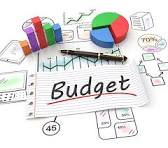
Building a budget doesn’t have to feel like a financial straitjacket—it can actually be your best tool for achieving financial freedom. Whether you’re looking to get out of debt, grow your savings, or simply gain control over your spending, a well-designed budget puts you on the fast track to financial health. But here’s the catch: Many people struggle to stick to a budget because it doesn’t reflect their real lifestyle or goals.
In this article, we’ll walk you through how to build a budget that works—one that fits your life, keeps you motivated, and ultimately helps you achieve long-term financial stability.
1. Why Budgeting is the Foundation of Financial Health
Think of your budget as the roadmap to your financial goals. It tells your money where to go, ensuring you’re prioritizing essential needs, eliminating unnecessary expenses, and building wealth for the future. Without a budget, it’s easy to overspend, accumulate debt, or miss opportunities to save.
Research shows that only 32% of Americans follow a detailed budget, even though budgeting is one of the most effective ways to improve financial health. A solid budget doesn’t just track numbers—it gives you a sense of control and direction over your financial life.
Pro Tip: Start thinking of budgeting as planning for your goals, not restricting your fun. A budget that aligns with your priorities becomes a tool for freedom, not frustration.
2. Choose the Right Budgeting Method for You
Not all budgets are created equal. The key to building one that works is finding a system that aligns with your personality and lifestyle. Here are three popular budgeting methods:
50/30/20 Budget
- 50% of income: Needs (housing, groceries, utilities)
- 30% of income: Wants (dining out, hobbies, travel)
- 20% of income: Savings and debt repayment
This method is ideal if you’re looking for simplicity and prefer some flexibility in discretionary spending.
Zero-Based Budget
- Every dollar you earn is assigned a specific purpose, so income minus expenses equals zero.
This is great if you like detailed control and tracking each dollar. It forces you to be intentional with your spending.
Envelope System (or Cash-Only Budgeting)
- You allocate cash to different spending categories (like food or entertainment), and once the envelope is empty, you can’t spend more in that category.
This approach is helpful for people who struggle with overspending and need clear boundaries.
Practical Tip: Start with the 50/30/20 method if you’re new to budgeting. As you get comfortable, you can shift to a zero-based budget for more precision.
3. Track Your Spending and Find Your Baseline

Before building your budget, you need to understand where your money is going. Track your expenses for at least 30 days to get a clear picture of your spending habits. This will highlight where you can cut back and how much money is available to allocate toward savings or debt reduction.
How to Track Expenses:
- Use budgeting apps like Mint, You Need a Budget (YNAB), or EveryDollar to automate tracking.
- Review your bank statements to categorize expenses manually.
- Pay close attention to non-essential spending (like coffee runs or impulse shopping).
Understanding your baseline spending gives you a solid foundation to build a realistic budget—one that reflects your true financial situation instead of wishful thinking.
4. Set Realistic Financial Goals
Your budget will only work if it’s tied to goals that motivate you to stick with it. Ask yourself: What do you want to achieve with your money? Your goals could include:

- Short-term: Saving $1,000 for an emergency fund
- Medium-term: Paying off a credit card within 12 months
- Long-term: Building a down payment for a home
Breaking your goals into smaller, actionable steps makes them feel achievable and helps maintain momentum. For example, if you want to save $6,000 in a year, aim to save $500 per month. This makes your goal measurable and easier to work toward.
Pro Tip: Write down your goals and keep them visible. When you’re tempted to overspend, a reminder of your “why” can help you stay focused on the bigger picture.
5. Build Flexibility into Your Budget
The reason many budgets fail is that they’re too rigid. Life is unpredictable, and your budget needs to adapt to changing circumstances. Whether it’s an unexpected car repair or a special occasion, your budget should be flexible enough to accommodate these events without derailing your financial health.
How to Stay Flexible Without Losing Control:
- Create a buffer category in your budget for unplanned expenses.
- Adjust your budget every few months to reflect changes in income or priorities.
- Use rollover categories—if you underspend in one month, let the surplus carry over to the next.
A budget that adapts to life’s ups and downs is easier to maintain long-term, reducing the chances of burnout or giving up.
6. Automate Where You Can to Stay on Track
One of the easiest ways to build a budget that works is to automate as much as possible. This removes the temptation to skip savings or delay payments, making it easier to stay consistent.
What to Automate:
- Savings transfers: Set up automatic transfers to your savings account every payday.
- Bill payments: Automate recurring expenses like rent, utilities, and loan payments to avoid late fees.
- Debt repayments: Use automatic payments to stay on track with your debt reduction goals.
Automation helps you prioritize savings and essential expenses without relying on willpower, which can wane over time.
7. Review and Adjust Your Budget Regularly
Building a budget is not a one-and-done task—it’s an ongoing process that evolves as your financial situation, priorities, and goals change. Think of your budget as a living document that requires regular check-ins to stay effective. Life is full of surprises—new expenses, unexpected income, or shifting priorities—and your budget needs to keep up.
By reviewing your budget monthly, you can identify what’s working, address any problem areas, and stay on course toward financial health. A small misstep, like consistently overspending on dining out, might not seem like a big deal initially—but if left unchecked, it can disrupt savings goals or slow down debt repayment efforts. Regular reviews allow you to course-correct early before minor issues become major setbacks.
How to Conduct an Effective Budget Review
A monthly budget review doesn’t need to take long—15 to 30 minutes is often enough. Use these check-ins to assess whether your financial plan is still aligned with your goals and identify areas that need adjustment. Here’s a breakdown of key questions to guide your review:
Am I Meeting My Savings and Debt Reduction Targets?
Savings and debt repayment are the cornerstones of financial health, and your budget should reflect these priorities. During your review, compare actual savings and debt payments with your targets to see if you’re on track.
- For savings: Are you hitting your monthly goals for emergency savings, retirement accounts, or sinking funds?
- For debt repayment: Are you paying off more than the minimum? Are you following your chosen debt strategy (e.g., debt snowball or debt avalanche)?
If you find yourself falling short, identify where you can adjust. Maybe you can redirect funds from non-essential spending categories or take on a side hustle to boost income.
Are There Areas Where I Consistently Overspend?
Budgeting isn’t about perfection—it’s about progress. Some categories, like groceries, dining out, or entertainment, are prone to overspending. Identifying these patterns helps you pinpoint problem areas and make necessary tweaks.

- Example: If you consistently exceed your grocery budget, it may signal that you need to raise your grocery allowance to reflect rising food prices—or find ways to shop smarter, like meal planning or using coupons.
- Solution: If dining out is your weak spot, consider adjusting your budget to allow for occasional indulgences while setting firmer limits.
Tracking overspending helps you regain control before it throws off your financial plan. You can also experiment with cash envelopes or set weekly spending caps for categories that tend to spiral out of control.
Did Any New Expenses Come Up That Need to Be Included?
Life doesn’t always go according to plan. New expenses—like medical bills, car repairs, or school supplies—can pop up unexpectedly. A monthly budget review allows you to take stock of any new expenses and figure out how to reallocate your budget to accommodate them.
- Emergency fund check: If you’ve had to dip into your emergency savings, use your review to plan how you’ll rebuild it.
- Sinking funds: If you anticipate irregular expenses (e.g., holiday shopping, vacations, or annual subscriptions), consider creating a sinking fund. This way, you’ll be prepared instead of scrambling to adjust your budget at the last minute.
Incorporating new expenses early ensures they don’t derail your financial progress.
Are My Financial Goals Still Relevant?
Your goals will evolve as life changes. Perhaps you’ve reached your emergency fund target and now want to shift focus toward retirement savings or travel funds. Or maybe you need to pause aggressive debt repayment temporarily to handle an unexpected expense.
Your monthly budget review gives you the chance to evaluate your priorities and adjust your financial plan accordingly. This helps ensure that your budget reflects your current needs and goals rather than outdated ones.
Can I Optimize or Automate Any Part of My Budget?
During your review, look for opportunities to streamline or automate your budget. Automation makes it easier to stay consistent with savings, debt repayment, and bill payments by removing the temptation to spend elsewhere.
- Savings automation: Set up automatic transfers from your checking account to savings accounts every payday.
- Bill automation: Schedule automatic payments for recurring bills to avoid late fees and missed payments.
Optimizing your budget might also mean revisiting recurring expenses—like streaming services or gym memberships—to see if there are areas where you can cut back or switch to a cheaper alternative.
How Can I Celebrate Progress Without Sabotaging My Budget?
Maintaining a budget requires discipline, but it’s important to reward yourself along the way to stay motivated. During your review, acknowledge your successes—whether it’s paying off a credit card, hitting a savings milestone, or sticking to your grocery budget.
Celebrate responsibly by budgeting small rewards (like a dinner out or a weekend getaway) without compromising your financial goals. These rewards reinforce positive habits and make it easier to stick with your budget over the long term.
Make It a Habit: Schedule Your Monthly Check-In
Consistency is key. Set a specific day each month for your budget check-in—whether it’s the first of the month or after your payday. Put it on your calendar and treat it as a non-negotiable task.
If you share your finances with a partner, use the check-in as an opportunity to align your financial goals and adjust spending plans together. This creates accountability and ensures that both of you stay on the same page.
Pro Tip: Make your review session enjoyable by pairing it with something you enjoy—like a good cup of coffee or a favorite snack. This helps you associate budgeting with positive feelings rather than stress.
A Budget is the Key to Lasting Financial Health
A well-designed budget is more than just a tool for tracking income and expenses—it’s your roadmap to financial health. When you align your spending with your priorities, automate your savings, and stay flexible with life’s curveballs, you create a budget that works.
Remember, the goal isn’t perfection—it’s progress. Even small changes, like cutting unnecessary subscriptions or automating savings, can have a significant impact over time. Stick with your budget, adjust it as needed, and watch how it transforms your financial life for the better.
“A budget tells your money where to go instead of wondering where it went.” – John Maxwell
With the right mindset and the right tools, financial health is within your reach—one budget at a time.
